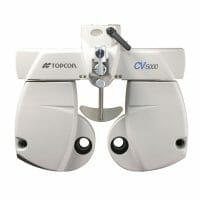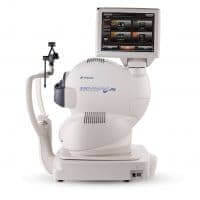Blepharitis develops at any age and symptoms include:
- itchy, sore and red eyelids that stick together
- crusty or greasy eyelashes
- a burning, gritty sensation in your eyes
- increased sensitivity to light (photophobia)
- swollen eyelid margins
- finding contact lenses uncomfortable to wear
- abnormal eyelash growth or loss of eyelashes in severe cases
What is Demodex?
Demodex is a common mite. Research shows that Demodex infestation increases with age, occurring in 84% of the population at age 60.
Although the Demodex mite is a normal resident within our skin, current evidence suggests that Demodex can cause or make blepharitis worse. Furthermore, it is thought that Demodex overpopulation is responsible for various skin disorders such as rosacea.
Demodex & Blepharitis
Demodex infestation in the eyelids is a type of Blepharitis. It leads to eye irritation, burning and itching of the eyes. As with non-demodex Blepharitis, the eyelid margins become red with typical debris at the base of the eyelashes. Many patients also complain of dry eyes and even occasions of blurred vision. Often, after treatments such as Blephex, Demodex tails may be visible under the microscope.
In-Practice Treatments
1. Blephex Treatment
Increased bacteria around the eyelids produce waste that coats the eyelids and lashes causing inflammation around the lids and sometimes the eye. An effective solution is to perform deep eyelid exfoliation to reduce the bacteria and remove the waste. As a result, Blephex treatment provides the ideal kick start to at-home lid hygiene. In general, we recommend treatment every 6 months.
Steps of treatment:
- Photograph eye lids pre-treatment
- Moisten lids to loosen debris
- Apply 1 drop of anaesthetic in each eye
- Clinician will perform treatment with Blephex motorised probe
- Photograph eye lids post-treatment
Blephex treatment will leave your eyes feeling fresh and clean.
See the Difference
Book Your Appointment Now
At-Home Treatments
Lid Wipes
We recommend regular lid hygiene using specially designed wipes to remove the crusty dandruff-like flakes at the base of the eye lashes. In general, perform lid hygiene twice daily even in the absence of symptoms to prevent Blepharitis causing further problems.
Eyelid wipes are preferred over moistened cotton buds for two reasons. Firstly, they are impregnated with a chemical designed to loosen debris on the lids. Secondly, the wipes are sterile whereas cotton buds are not be once the container is opened.
For non-demodex related blepharitis we recommend Blephaclean, whereas for demodex blepharitis, OcuSoft or Blephademodex wipes are advised.




